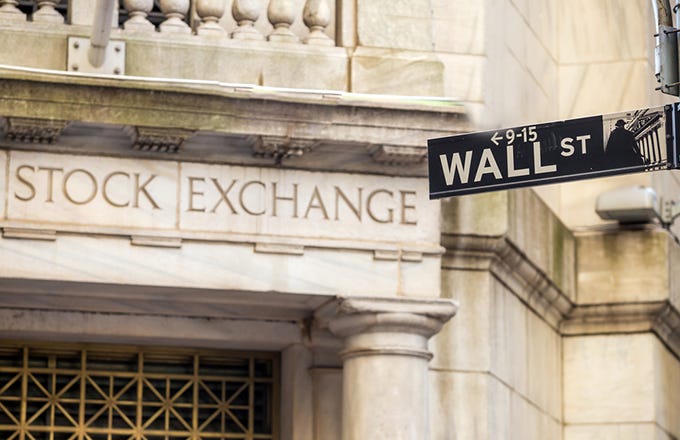A credit card is a thin, rectangular piece of plastic (sometimes metal) measuring roughly 3.5 inches by 2.0 inches that gives you access to a line of credit so you can make purchases as needed and pay for them later. Every credit card is imprinted with an account number, the cardholder’s name, the issuing institution’s name, the card type (MasterCard, Visa, Discover or American Express), the card’s expiration date, the card issuer’s contact phone number, a three-digit validation number and a signature strip. A chip is embedded in the front of the card and a magnetic strip is contained on the back. The card may also contain a security feature such as a hologram to make counterfeiting more difficult.
How to Use a Credit Card
A credit card can be used to make purchases in person at a store, over the phone or online. In a store or at a gas station, you will either swipe the card’s magnetic stripe through a card reader or insert the card chip side up into a card reader. If your card is a chip-and-PIN card, you will also enter your personal identification number into the card reader’s keypad. Chip cards have become more popular than magnetic stripe cards because chip cards are considered more secure. When you make a purchase in store, contactless credit cards that you wave above a card reader are also an option at stores that accept contactless payments. Credit card details can even be stored in a mobile wallet and used to make purchases via smartphone both in store and online. In short, today we enjoy more ways to use a credit card than every before.
RELATED: What Are Contactless Cards and How Safe Are They?
When you use a credit card over the phone, such as when you’re calling your doctor’s office to pay a bill, you’ll need to provide the card number, expiration date, and validation code. Some vendors will also ask for the cardholder’s name and address. The process is similar for using a credit card online.
Almost all product and service providers accept credit cards, with some exceptions:
– Small businesses, especially sole proprietors, restaurants and legal marijuana businesses (See While Banks Shut the Doors on the Marijuana Industry, Startups Come to the Rescue)
– Certain gas stations
– Most mortgage servicers and student loan servicers (But see Earn Credit Card Rewards for Paying Student Loans and Should I pay my mortgage with my credit card to earn credit card rewards?)
Why don’t all businesses take credit cards when consumers love to pay with them and businesses might miss out on a sale if a consumer doesn’t have cash? Businesses have to pay fees to process credit card payments. There’s also the risk of a customer claiming dissatisfaction with a purchase and asking their credit card issuer to reverse the payment, resulting in a chargeback to the merchant. It can also be time consuming to select a payment processor and set up a merchant account since there are so many options and pricing models can be complicated.
RELATED: Best Credit Card Processing Solutions for Small Businesses
As a consumer, you don’t normally have to pay a fee to the merchant to use your credit card. But because the entity that accepts your credit card must pay a transaction fee to process the payment, some businesses and government agencies and even some businesses pass the credit card fee on to the consumer. If you want to pay your federal income taxes with a credit card, for example, you’ll usually have to pay a fee of about 2.0% of the payment amount.
When you use your credit card to buy something, a lightning-fast process happens at the register or through a website to make sure your card is valid and that you have enough available credit to make the purchase. You then no longer owe money to the merchant, but to your credit card issuer, and your credit limit goes down by the amount of your purchase.
How Credit Limits Work
|
Initial Credit Limit |
Transaction Amount |
Transaction Approved? |
Remaining Credit Limit |
|
$1,000 |
−$250 |
Yes |
$750 |
|
|
−$850 |
No |
$750 |
|
|
−$100 |
Yes |
$650 |
They Only Look Alike: Credit Cards, Debit Cards, Charge Cards, Prepaid Credit Cards
Credit cards vs. debit cards. They may look the same in your wallet, but credit cards work very differently from debit cards. When you pay with a debit card, the money leaves your checking account immediately. When you pay with a credit card, no money leaves your bank account until you pay your credit card bill, which won’t be due for anywhere from a few days to a few weeks after you make your purchase.
Credit cards also allow you to carry a balance. In exchange for this privilege, you’ll have to pay interest on the balance you carry, just like you would on a loan. Credit cards generally charge higher interest rates than auto loans, home equity loans, student loans, mortgage loans and other types of secured loans, but lower interest rates than payday loans. Unsecured personal loan rates may be lower or higher than credit card rates, depending on the applicant’s credit score.
Credit card loans are open-ended, meaning you can borrow repeatedly as long as you stay below your credit limit, and unsecured, meaning there’s no collateral the bank can seize and sell if you don’t pay what you owe. (Secured credit cards are an exception; we’ll discuss them in section 4.) That’s why credit cards have higher interest rates than a secured loan like an auto loan or a home loan.
Credit cards vs. charge cards. Credit cards also look just like charge cards, but charge cards are meant to be repaid in full by the end of your billing cycle; they aren’t meant for carrying a balance. These cards may offer a discount for paying your balance early or may allow up to 60 days for you to pay your full balance if you pay a minimum percentage of your bill shortly after your statement is issued. Charge cards don’t have preset spending limits like credit cards do. Instead, the card issuer adjusts your credit line periodically based on the financial resources you listed on your application, your card use, your credit score and your payment history. Charge cards don’t have an APR in the same way credit cards do, but if you carry a balance, you will pay a fee that’s a percentage of the past due amount. That fee will increase if you continue to carry a balance from one billing period to the next.
RELATED: Credit, Debit and Charge: Sizing Up the Cards in Your Wallet
Prepaid credit cards work like credit cards in how they allow you to pay for purchases. But they’re unlike credit cards in that you don’t need to have good credit to get one; you can simply buy one from almost any major retailer, such as Target or CVS. You can’t carry a balance on a prepaid credit card since you have to load the card with money before you can use it. They aren’t really “credit” cards at all. They’re more like gift cards that you can use anywhere, not just at a specific merchant, and that you can reload with more funds after you spend down your balance.
Next, we’ll explain how to apply for a credit card.
Credit Cards: How to Apply for a Credit Card
-
 Personal Finance
Personal Finance3 New Types Of Credit Cards To Look For
These three types of credit cards are becoming popular with customers looking to pay less fees and build up their credit scores. -
 Personal Finance
Personal FinanceCredit Card or Cash: Which To Use?
Credit cards are more convenient to use than cash, but they're not always the best choice. Here is why you should and shouldn't pay with a credit card. -
 Personal Finance
Personal Finance10 Reasons To Use Your Credit Card
There's a surprising credit card strategy you should employ as a consumer ... use your card for everything (or almost). -
 Personal Finance
Personal FinanceWhy More Millennials Need Credit Cards
Here's why more Millennials should have credit cards – even though a majority don’t. -
 Personal Finance
Personal FinanceCredit vs. Debit Cards: Which Is Better?
Credit and debit cards may look identical, but they're not. Be strategic about which type of card you use. -
 Personal Finance
Personal FinanceBest Credit Card Features For Students
Students should look for credit cards that charge no annual fees, have a low introductory interest rate and offer rewards or money. -
 Personal Finance
Personal FinancePurchases You Should Always Make With A Credit Card
Credit cards aren't always bad possessions to have. There are certain perks associated with using credit cards as we make routine or irregular purchases. -
 Personal Finance
Personal FinanceHow Many Credit Cards Should You Carry?
If you have ever wondered whether you should carry one, two or more cards, read on and we'll tell you. -
 Personal Finance
Personal Finance7 Factors For Comparing Credit Cards
It's good to find a credit card that fits your lifestyle, but read the fine print to make sure you're not overpaying for the benefits.



